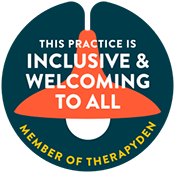The Impacts of Parental Attachment Styles On Relationships
How one responds in relationships has a lot to do with the child-parent dynamic. If you continue to repeat the same toxic, dysfunctional patterns in your relationships, and struggle with feeling safe and stable with partners, you may want to explore your childhood relationships with your parents. In contrast, if you experienced a generally stable, loving, non-abusive family environment, maybe you have noticed some really toxic behaviors from an ex-partner that led you to feel confusion, having no choice but to end the relationship. Our relationships are the main ways we are triggered to act on the dysfunctional impulses that were a large part of the environment we experienced in our family growing up.
As we develop into adults, our sense of safety and security in the world is highly influenced by the type of relationship and attachment we experienced with our primary caregivers. Our earliest attachments shape our experiences in relationships throughout our lives, how we respond in our relationships and our expectations for our relationships. Parents or caregivers that are abusive or neglectful can lead children to develop an insecure attachment, which follows them throughout their lives in the close relationships they form with others. Aside from this insecurity, children can also develop attachment issues with caregivers who are emotionally or physically distant, unavailable, unreliable, behave inconsistently, struggle with addiction, are highly emotionally reactive, or struggle with their own mental health. With insecure attachments, children attempt to adapt to the dysfunctional environment by creating psychological defenses that keep them feeling “safe” and that spill over into how they relate to others. There are several different types of insecure attachment that may lead to unhealthy, dysfunctional relationships in adulthood.
Avoidant (Dismissive) Attachment
With Avoidant (Dismissive) Attachment, some babies and children experienced caregivers that were unable to provide the emotional support and attention they needed. With this insecure attachment, expressing emotions was discouraged or ignored, and there was a feeling of emotional distance or lack of connection with the primary caregivers or parents.
How it affects your relationships as an adult:
You may experience a pattern of wanting to distance yourself in your relationships.
After a time of feeling connected and enjoying a partner in the beginnings of a relationship, you may find yourself getting easily annoyed or irritated by “little things” which push you further and further away from wanting to connect with them or continue the relationship.
You tend to pull away or disconnect when your partner wants closeness.
It feels safest being independent, and you may intentionally avoid the intimacy of relationships.
Anxious/Insecure (Preoccupied) Attachment
With this attachment style, a child may have experienced parents who were inconsistent in their response to their needs or desire for connection. They may have vacillated between being nurturing and well-attuned, to then becoming emotionally unavailable or insensitive. The inconsistencies in behaviors may lead the child to feeling confused or unsure about how their parent would act or respond to them.
How it affects your relationships as an adult:
You may struggle with conflict, and experience extreme anxiety over arguments or disagreements, even if they’re minor. This is due to the fear that your loved one or partner may emotionally or physically withdraw or abandon you.
You need a lot of reassurance in the relationship and may become overly dependent on your partner.
You may be described as needy, and have difficulty being away from your partner.
You constantly feel on-edge or unsure about how your partner feels about you and anxious about what response you will get from them.
Disorganized (Unresolved) Attachment
Disorganized attachment is considered the insecure attachment style where the caregiver was most likely physically, emotionally or sexually abusive towards the child and invoked fear. Children who develop this attachment style may have felt love for their abusive parent because they were the only source of connection, but may have also feared them intensely. Disorganized attachment can still occur if the abuse or violence is targeted towards another parent or sibling and witnessed by the child.
How it affects your relationships as an adult:
You long for closeness and connection but feel extreme anxiety and fear when forming relationships.
The trauma of experiencing a parent who was loving one minute and then abusing the next leaves you to experience love and closeness as something dangerous.
You may find yourself acting out in extreme ways that push your partner away or lead them to have no choice but to break the relationship off.
You may have a very poor self-image and harmful self-talk.
You find yourself acting in erratic ways that lead to sabotaging relationships, and it is a continual pattern.
Any of the insecure attachment styles listed above can lead to trauma. The only attachment style that does not connect to trauma is a secure attachment. No one person’s childhood is completely flawless, but with a secure attachment children feel seen and heard by their parents. They feel safe in expressing thoughts and feelings, and are secure in their connection with their parent because their behavior is consistent enough. If there’s conflict or distress, children have the security of knowing that problems or conflicts will get resolved, and life will return to normal.
With Secure Attachment:
You can communicate your needs and feelings effectively.
You are able to trust your partner.
You can face and resolve conflicts well.
You are able to tolerate emotions well.
You have no problem being alone or in a relationship.
Speaking with a licensed therapist can be the first step to recognizing how your childhood environment is still negatively affecting your relationships and well-being.
Your parents’ behaviors and relationship with you as a child was the main foundation for which attachment style you may fit. It is the parents’ responsibility to lay the foundations of physical, emotional, and mental safety and security for the child. Without it, children struggle to regulate emotions effectively, and develop defense mechanisms that negatively affect relationships well into the future. A licensed or trauma-informed therapist can help you navigate your past, make sense of how you’ve been affected, and in turn assist you in shifting your narrative to one of strength, survival and overcoming adversity. You can experience a secure attachment with a loved one through examining your past and seeking out relationships with others that have healthy, secure attachments. Healing, no matter what facet, is possible.
Click here to schedule a session with a Licensed Trauma Therapist.
Blog inspired by brickelandassociates.com





